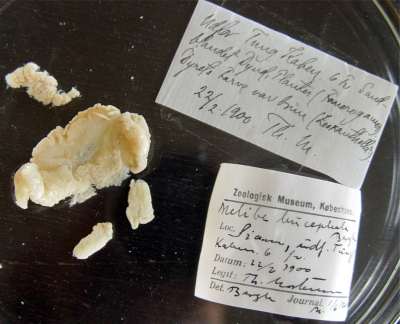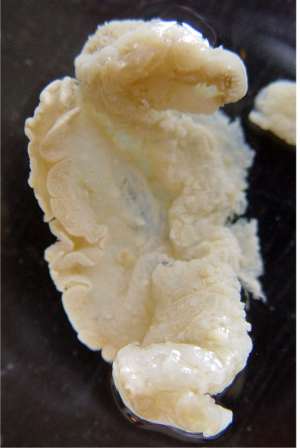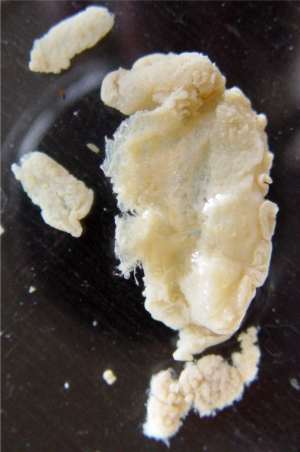Melibe bucephala
Bergh, 1902
Order: NUDIBRANCHIA
Suborder: DENDRONOTINA
Family: Tethydidae
DISTRIBUTION
Known only from Thailand
NOTE: see my comments [# 13326 ] on records of Melibe megaceras from the Red Sea identified as Melibe bucephala, and Kathe Jensen's message [#13409] concerning the holotype of M. bucephala.
It is difficult to be sure what Melibe bucephala is. Bergh described it on the basis of a single preserved animal from Thailand, in which most of the cerata had neem lost. No illustration is available of the living animal. In Gosliner's revision (1987) he lists some distinguishing features including rhinophore sheath - flattened and leaflike, and the oral hood with 5 rows of papillae. Bergh describes jaw plates in M. bucephala.. There is no sure way of confidently re-identifying Bergh's M. bucephala.
-
Bergh, L.S.R. (1902) The Danish Expedition to Siam 1899-1900. 1. Gasteropoda Opisthobranchiata. Det Kongelige Danske Videnskabernes Selskabs Skrifter. 6 Raekke. 12(2): 153-218. (Pls.1-3)
Rudman, W.B., 2005 (March 24) Melibe bucephala Bergh, 1902. [In] Sea Slug Forum. Australian Museum, Sydney. Available from http://www.seaslugforum.net/find/melibuce
Related messages
Re: Melibe megaceras from Red Sea
March 25, 2005
From: Kathe R. Jensen

Dear Bill,
Concerning your comments on Melibe from the Red Sea [#13326]: As I have told you before, I have prepared a catalogue of the type specimens described by Bergh in the collection of the Zoological Museum in Copenhagen (the reason it has not yet been published is that there is still some loose ends that need to be tied up). However, I did find the Holotype of Bergh's Melibe bucephala. As there was only one specimen, you can imagine what it looks like - completely eviscerated! I took a few pictures that I am attaching with this message.
On the first picture I have included the labels that I found with the specimen. I think that the one with no name on it is one written by the collector, Dr. Th. Mortensen (the great echinoderm specialist). The Danish text is (my translation): Off Tung Kaben, 6 fathoms, sand mixed with mud, plants (Phanerogames). The colour of the animal was brown (zooxanthella?). 22 Feb. 1900, Th. M.
In Mortensen's diary from this expedition (Gulf of Siam) Mortensen has written (my translation): ...large Tethys (was brown, turned green in alcohol - algae?) - egg strings from this one (?), ....; the bottom full of a Phanerogam with small beautifully green leaves.
So you can see that Mortensen was a much bette biologist than Bergh, and that information about colour exists - he even guessed the source of the colour. The seagrass was probably Halophila ovalis. The name of the site is presently known as Kung Kraben.
I hope that this information is useful.
Maybe I should add that I am presently translating the diaries of Th. Mortensen from his expedition to the Gulf of Siam.
Best wishes,
Kathe
krjensen@zmuc.ku.dk


Dear Kathe,
Thanks for this interesting background information.
Best wishes,
Bill Rudman
